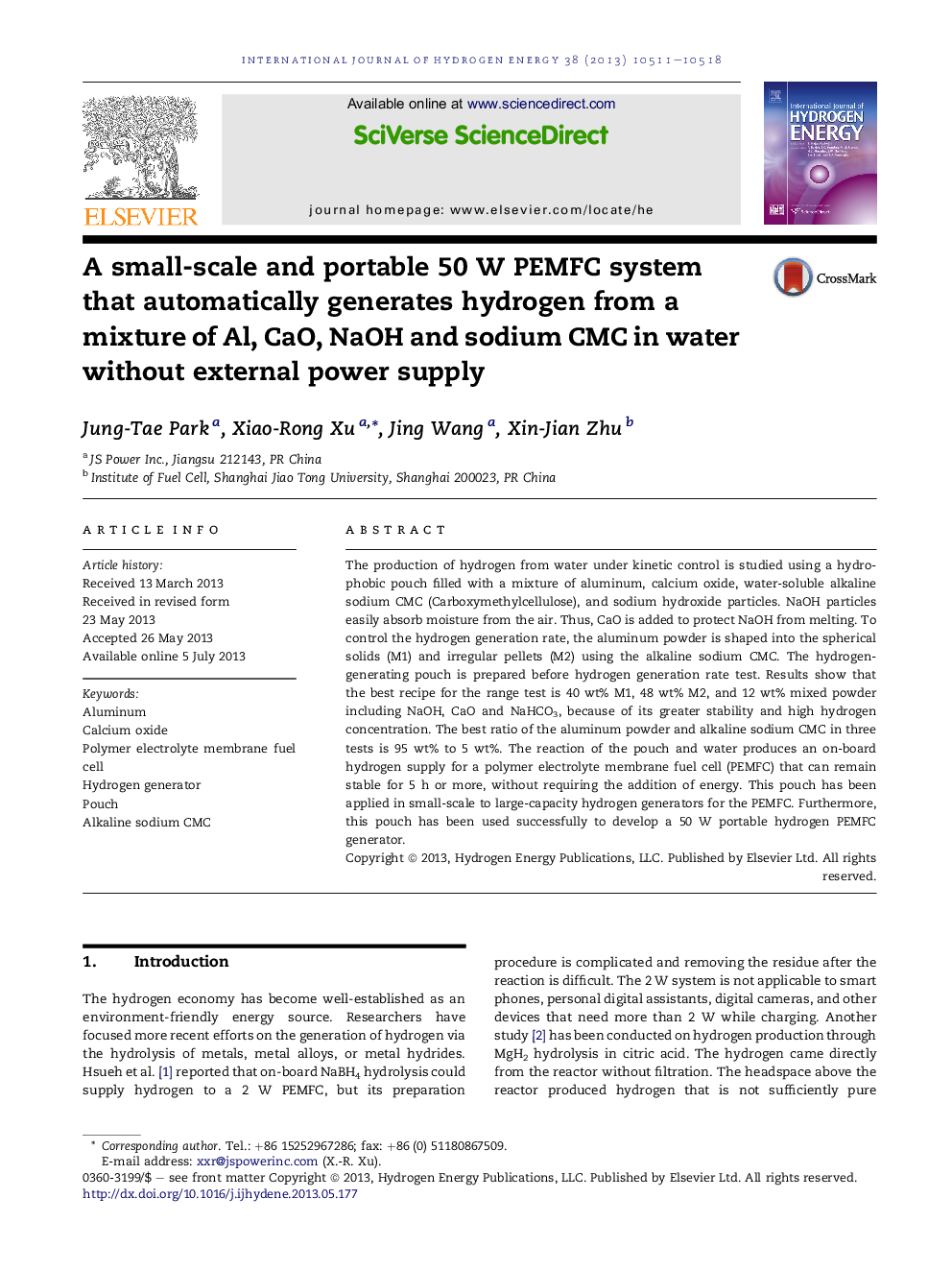| Article ID | Journal | Published Year | Pages | File Type |
|---|---|---|---|---|
| 7722334 | International Journal of Hydrogen Energy | 2013 | 8 Pages |
Abstract
The production of hydrogen from water under kinetic control is studied using a hydrophobic pouch filled with a mixture of aluminum, calcium oxide, water-soluble alkaline sodium CMC (Carboxymethylcellulose), and sodium hydroxide particles. NaOH particles easily absorb moisture from the air. Thus, CaO is added to protect NaOH from melting. To control the hydrogen generation rate, the aluminum powder is shaped into the spherical solids (M1) and irregular pellets (M2) using the alkaline sodium CMC. The hydrogen-generating pouch is prepared before hydrogen generation rate test. Results show that the best recipe for the range test is 40Â wt% M1, 48Â wt% M2, and 12Â wt% mixed powder including NaOH, CaO and NaHCO3, because of its greater stability and high hydrogen concentration. The best ratio of the aluminum powder and alkaline sodium CMC in three tests is 95Â wt% to 5Â wt%. The reaction of the pouch and water produces an on-board hydrogen supply for a polymer electrolyte membrane fuel cell (PEMFC) that can remain stable for 5Â h or more, without requiring the addition of energy. This pouch has been applied in small-scale to large-capacity hydrogen generators for the PEMFC. Furthermore, this pouch has been used successfully to develop a 50Â W portable hydrogen PEMFC generator.
Related Topics
Physical Sciences and Engineering
Chemistry
Electrochemistry
Authors
Jung-Tae Park, Xiao-Rong Xu, Jing Wang, Xin-Jian Zhu,
